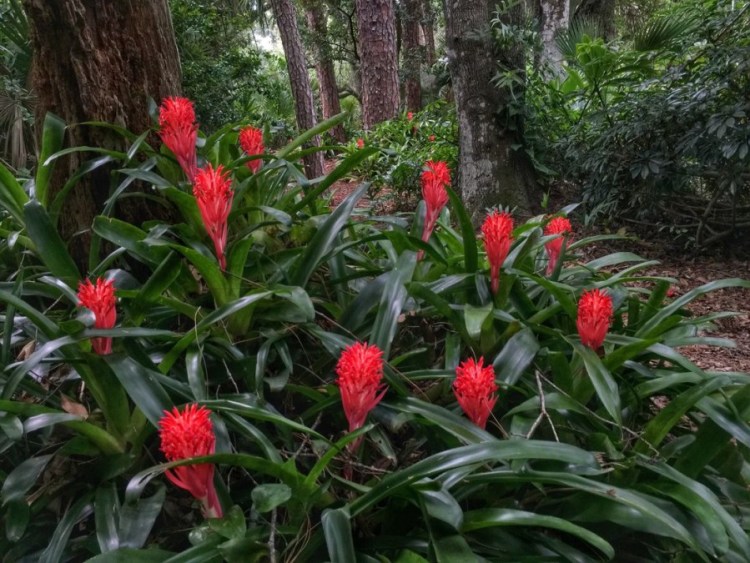Bromeliad: A tropical, colorful plat for your pot and garden
Add an exotic touch and tropical vibes to your home with the gorgeous and unique Bromeliad plants.
Bromeliads are one of the best tropical plants to grow in your pot and garden. They are extremely adaptable, tolerating a variety of home environments. By following a few basic techniques, you can watch these beautiful and brightly colored plants thrive and flower for years to come.
Almost all bromeliads are native to tropical climates. Their original habitat is humid and they grow on shady forest floors or attached to trees. This means bromeliads are adapted for warm, wet, shady climates. If you live in an area that will not freeze, you can safely plant your bromeliad outside. However, make sure you have a space that will not expose your bromeliad to large amounts of direct sunlight. A bromeliad can experience leaf burn if exposed to too much direct light. Different varieties have different tolerances for exposure to the sun. Monitor your site to determine how much direct sun it receives and at what time of day and then purchase a bromeliad whose needs align with your site specifications. It is also important that your bromeliad remains moist.

Platycodon a beautiful plant with purple flowers is a delight for the yard and garden in summer and winter
Bromeliad Plant Care Tips
Bromeliad plants require a different type of care, but similar to Philodendron and Pothos, it’s pretty easy and doable even for beginners. Don’t panic because we’ve got you covered on how to care for your Bromeliad plant. From sunlight requirement to common problems and their solutions.
Sunlight
First, on our list on how to care for your Bromeliad plant is to put it in a bright, sunny space where it can get bright, indirect light. They can also thrive in low light conditions, which makes them great low light indoor plants, as well. Avoid placing your Bromeliad plant under direct sunlight as this can burn the leaves.
Generally, if you have a Bromeliad plant with hard or stiff leaves, it will most likely enjoy bright, indirect light. While a Bromeliad plant with soft, flexible leaves will prefer lower lighting levels.
Common Problem: If the leaves of your Bromeliad plant are producing brown or white patches, it could mean that the plant is receiving too much light.
Solution: Your Bromeliad plant will grow best under bright, indirect light. A Bromeliad plant that has been receiving too much light will have bleached (white patches ) or sunburned (brown patches) leaves.

Water
Next on our list on how to care for your Bromeliad plant is to water it once a week since they are very tolerant of drought conditions. It’s important to keep the soil moist, but not soggy. Avoid overwatering your plant to avoid root rot.
There are two ways you can water your Bromeliad plant:
- Keep the central cup filled with water, particularly if the light levels and temperature are high. Be sure to remove the water from the central cup every so often to remove any built-up salts.
- Water your Bromeliad plant through the soil weekly during the growing season.
Common Problem: Overwatering your Bromeliad plant can cause severe damage, such as root rot.
Solution: The best way to avoid this problem is to follow a watering schedule of once a week. It’s much better to underwater your plant since it’s fixable than to overwater it.
Your Bromeliad plant can be sensitive to salts in tap water, so it’s best to use distilled water or a water filtration system. However, if this is not possible, leave the water in an open container overnight.
Brugmansia: An amazing large lush flower in the form of phonographs for your pot and garden

Humidity & Temperature
Adding to our list on how to care for your Bromeliad plant is to put it in a room with a relative humidity of 40 to 60%. To increase the humidity in your home, we suggest that you mist it often, place it near a humidifier, or use a pebble tray. Avoid placing your plant near air conditioning vents, doors, and drafty areas, as well.
Also, your Bromeliad plant prefers temperatures between 70–75°F during the day and between 60–65°F at night.
Toxicity
Your Bromeliad plant is non-toxic to children and pets.
Pests & Other Problems
Bromeliad plants are prone to common pests, such as mealybugs. To eliminate this pest, use a cotton swab dipped in rubbing alcohol. You can also use horticultural oil, organic insecticidal soap, or organic neem oil.





























1 comment
[…] Bromeliad: A tropical, colorful plat for your pot and garden […]
Comments are closed.